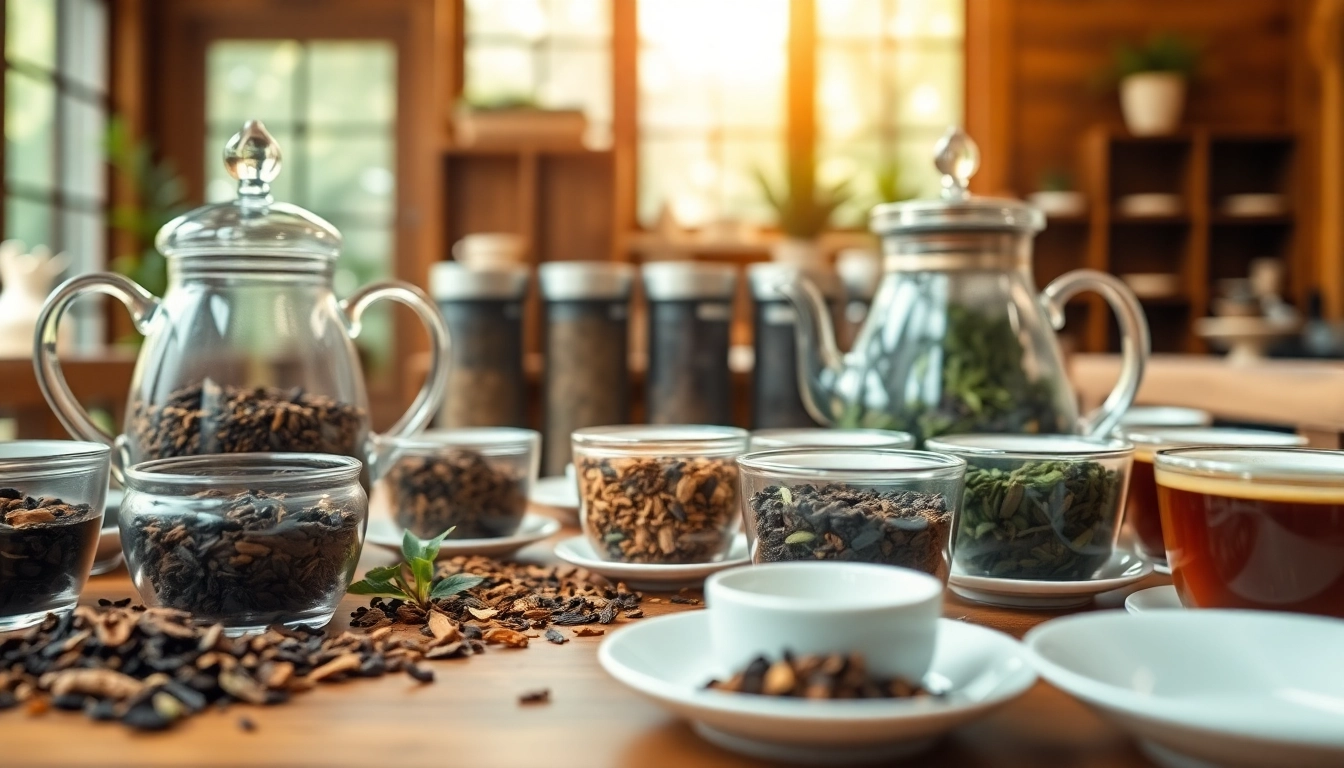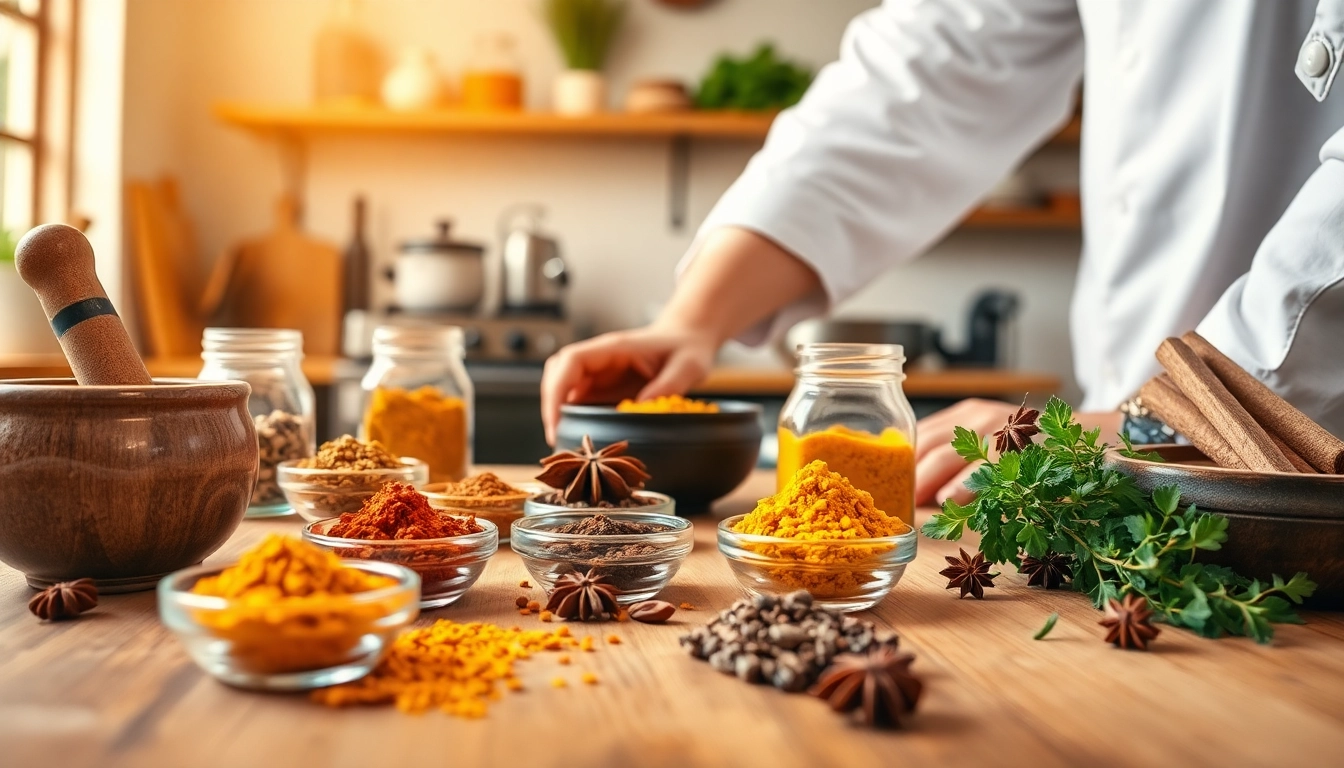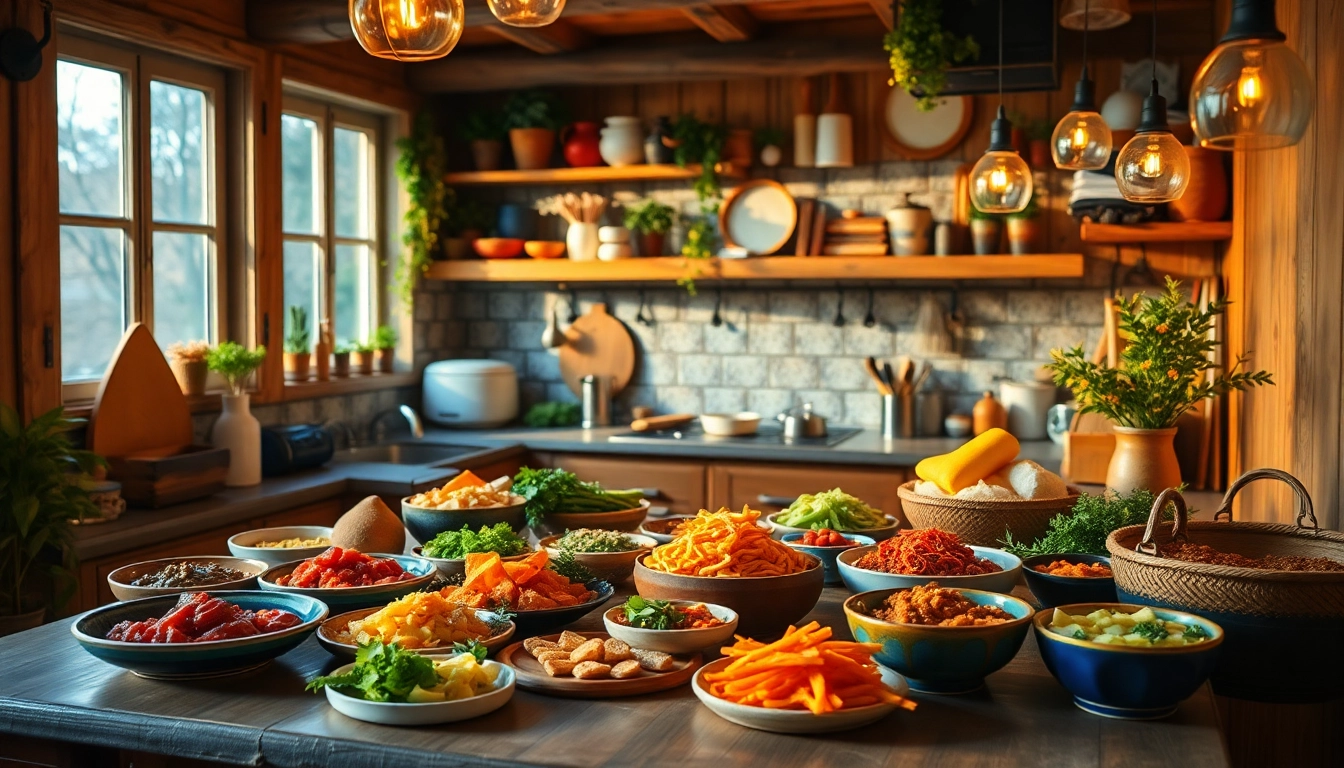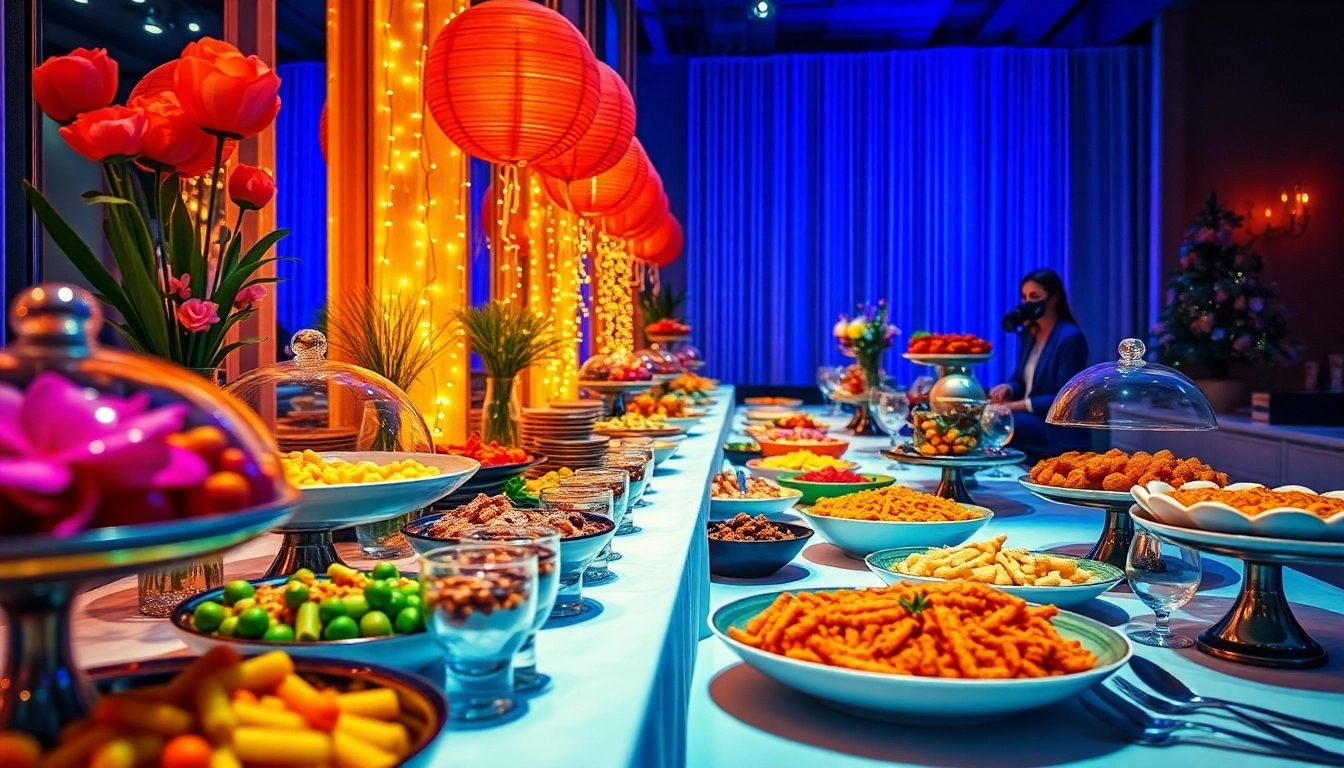What is Single Origin Tea?
Single origin tea is a term that refers to tea sourced from a specific region or estate, ensuring a unique flavor profile and quality indicative of that particular area. Unlike blended teas, which combine leaves from various origins, single origin teas highlight the distinctive characteristics of their geographical and climatic origins. This notion of origin plays a crucial role in the tea’s flavor, aroma, and overall quality.
For tea enthusiasts and those curious about the varied offerings in the tea market, understanding single origin tea can deepen appreciation for this ancient beverage and open pathways to discover unique flavors. Each cup of tea becomes a narrative of the land it comes from, providing a sensory experience tied to its roots.
Definition and Characteristics
To truly grasp what makes single origin tea unique, one must understand its core definition. Single origin tea is produced and harvested from a specific location, usually defined by geographical boundaries (like a specific hill, estate, or region). The characteristics of these teas can vary robustly based on factors such as soil type, climate, elevation, and even the methods employed by local farmers during the cultivation and processing stages.
Single origin teas often exhibit subtle flavor variations, making them stand apart from their blended counterparts, which aim for consistency. For example, a Darjeeling tea from the first flush may offer floral notes and a delicate palate, while a second flush might showcase a more robust, muscatel flavor. Understanding such nuances can enhance the tea-drinking experience, allowing consumers to appreciate the artistry involved in producing these singular brews.
The Importance of Terroir
Terroir, a French term traditionally used in wine making, refers to the environmental factors that affect a crop’s phenotype. In the context of tea, terroir encompasses aspects such as soil quality, climate, and topography, all of which contribute to the flavor and quality of the tea. This aspect of single origin tea cannot be overstated—each cup reflects a microcosm of its environment.
For instance, teas grown at high altitudes, such as those from the Himalayan tea estates, often possess a complexity and brightness that is less pronounced in teas cultivated at lower elevations. Furthermore, the historical practices and cultural significance within these regions influence both the cultivation and processing of tea, thereby impacting the final product. Understanding terroir allows tea drinkers to appreciate not merely a beverage, but a product of a particular time and place.
Different Types of Single Origin Tea
Single origin teas can be broadly categorized into various types, each revealing the unique aspects of their regional identities. Popular varieties include:
- Black Tea: Renowned for its robust flavors, single-origin black teas such as Assam or Yunnan provide rich, full-bodied brews.
- Green Tea: Originating from regions like Uji in Japan or West Lake in China, these teas are cherished for their fresh, vegetal notes and health benefits.
- Oolong Tea: Combining the characteristics of black and green teas, single origin oolongs from Taiwan offer diverse flavor profiles, often ranging from floral to fruity.
- White Tea: The delicate nature of single-origin white teas, like Silver Needle or Bai Mudan, prominence the premium hand-picked buds, resulting in a subtle and complex taste.
- Herbal Tea: While not “tea” in the traditional sense, single-origin herbal teas (like those sourced from specific regions for medicinal herbs) can offer unique flavors based on local plant varieties.
Benefits of Drinking Single Origin Tea
Drinking single origin tea extends beyond taste; it also carries a plethora of health benefits, enhances one’s tea-drinking experience, and promotes sustainability within farming practices. Understanding these benefits can help consumers make informed decisions about their tea selections.
Health Benefits
Single origin teas are often praised for their health benefits, resulting from the natural compounds found within tea leaves. These compounds include antioxidants, amino acids, and polyphenols, which can contribute to a range of health perks:
- Antioxidant Properties: Many single origin teas are rich in catechins and flavonoids, effective in combating free radicals, thus contributing to the prevention of chronic diseases.
- Lower Caffeine Levels: Varieties such as some white and green teas offer significantly lower caffeine levels than their black counterparts, making them suitable for more sensitive individuals.
- Enhanced Metabolism: Green teas are particularly beneficial in aiding metabolism and weight management, as supported by multiple studies.
- Stress Relief: Herbal single origin teas, such as those derived from specific plants in the Himalayas, can promote relaxation and combat stress through their soothing properties.
Taste Profile Comparison
One of the greatest pleasures of drinking single origin tea is the ability to explore the diverse taste profiles each type offers. These profiles can vary significantly even within the same type of tea, depending on the source. For example:
- Darjeeling tea: This Indian black tea is often referred to as the “champagne of teas.” The first flush showcases floral and fruity notes, while the second flush introduces complex muscatel elements.
- Assam tea: Known for its bold flavor and malty sweetness, Assam tea has a more robust character, making it ideal for breakfast blends.
- Shi Feng Long Jing (Dragon Well): This Chinese green tea is celebrated for its chestnut-like aroma and sweet aftertaste, reflecting the specific soil and climate conditions of its growing region.
Experimenting with different single origin teas allows consumers to embark on a journey of flavor discovery, making the tea experience not just a ritual, but an adventure.
Supporting Sustainable Farming Practices
Purchasing single origin tea often aligns with supporting sustainable farming practices. Many tea estates that focus on single origin production emphasize organic farming methods and fair labor practices. For instance, renowned estates in Darjeeling have certified organic practices that avoid synthetic pesticides and fertilizers, leading to healthier ecosystems and better quality tea. By choosing single origin teas, consumers can support farmers who are committed to sustainability and ethical practices.
This choice promotes biodiversity and contributes to the preservation of traditional agricultural practices, ensuring that future generations can enjoy high-quality teas. Supporting such practices fosters a sense of community and responsibility towards the environment, inviting consumers to be part of a larger movement.
How to Choose the Perfect Single Origin Tea
When faced with the myriad of single origin tea options available, selecting the perfect brew requires consideration of several factors. Understanding one’s own preferences can be just as crucial as knowing the characteristics of the teas available.
Factors to Consider
When selecting single origin tea, consider the following aspects:
- Flavor Profile: Identify your preferred taste notes—whether floral, fruity, grassy, herbal, or malty—to guide your choice.
- Tea Type: Understanding the difference between black, green, oolong, and white teas will help narrow down your options.
- Quality Indicators: Look for indicators of quality, such as organic certifications, estate names, and harvest dates. Freshness significantly affects flavor, so aim for recently harvested teas.
- Brewing Methods: Some teas may require specific brewing techniques to unlock their full flavor potential; it’s worthwhile to consider how you plan to brew your tea.
Reading Tasting Notes
Tasting notes are essential tools for any tea enthusiast when choosing a single origin tea. These notes, often provided by tea vendors, describe the flavor profile, aroma, and best brewing practices for a particular tea. For example, a tasting note might describe a specific Assam tea as “bold and malty with hints of honey”—insightful information when trying to match teas to personal preferences.
Additionally, checking for recommendations from fellow tea drinkers, either online or through local tea shops, can provide valuable information. Engaging with communities focused on single origin teas can also offer insights into the best selections and firsthand tasting experiences.
Recommendations Based on Preferences
Here are recommendations based on various preferences:
- If you prefer floral notes: Try a Darjeeling or a Jasmine green tea.
- If you enjoy bold flavors: Consider an Assam or a Yunnan black tea.
- If you’re inquisitive about the subtleties of green tea: Seek out authentic Japanese varieties, like Gyokuro, which has a rich umami flavor.
- If you want something unique: Explore oolongs from Taiwan, which often offer complex flavor profiles that change throughout the brewing process.
The Brewing Process for Single Origin Tea
To fully appreciate the distinctive nuances of single origin tea, proper brewing methods are essential. The brewing process can impact the flavor, aroma, and overall experience of the tea. Below, we delve into essential tools, a step-by-step brewing guide, and common mistakes to avoid.
Essential Tools and Equipment
While brewing single origin tea doesn’t necessitate extravagant equipment, having a few key items can enhance the brewing experience:
- Teapot or Infuser: A dedicated teapot or a high-quality infuser is essential for allowing the leaves to steep properly.
- Water Kettle: Quality water is vital; a kettle that allows you to control the temperature is essential, as different teas require different temperatures for brewing.
- Scale or Measuring Spoon: Accurate measurements help ensure the right tea-to-water ratio, crucial for achieving optimal flavor.
- Timer: Using a timer can prevent over-steeping, which leads to bitterness in green and white teas.
Step-by-Step Brewing Guide
Here’s a simple step-by-step guide for brewing single origin tea:
- Measure the tea: Use the recommended amount (usually 1 teaspoon per 8 oz of water, but this can vary).
- Heat the water: Use a kettle to heat water to the desired temperature (for example, 175°F for green tea and 200°F for black tea).
- Pre-warm your teapot: Pour a bit of hot water into your teapot or infuser to warm it up, which helps maintain brewing temperature.
- Add the tea leaves: Place the measured tea leaves into the warmed teapot or infuser.
- Pour water over the leaves: Slowly pour the hot water over the leaves, ensuring they are fully submerged.
- Set the time: Allow the tea to steep for the recommended duration (usually 2-4 minutes for green tea and 3-5 minutes for black tea).
- Strain the leaves: Once the time is up, remove the leaves to prevent over-steeping, which can cause bitterness.
- Enjoy: Pour the tea into your cup, taking a moment to appreciate its color and aroma before tasting.
Common Mistakes to Avoid
Even experienced tea drinkers can make errors when brewing single origin teas. Avoid these common mistakes:
- Using water that is too hot: Many green and white teas become bitter if the water temperature is too high. Always check the recommended brewing temperature and adjust accordingly.
- Incorrect steeping time: Allowing the tea to steep for too long can result in over-extraction, leading to bitterness. Pay careful attention to steeping times.
- Neglecting the tea-to-water ratio: Using too much tea can overpower the flavor, while too little can result in a weak brew. Stick to recommended guidelines to achieve the best flavor.
- Not tasting your tea: It’s important to take the time to savor the tea’s aroma and flavor. Rushing can detract from the experience.
Pairing and Enjoying Single Origin Tea
Enhancing the experience of single origin tea goes beyond the brew itself; food pairings and mindful practices can elevate enjoyment to new heights. Here, we explore food pairing suggestions, ways to enhance the tea experience, and opportunities for community engagement through tasting events.
Food Pairing Suggestions
Pairing single origin tea with the right foods can create harmonious flavor combinations that enhance the characteristics of both. Here are a few suggestions based on common tea types:
- Black Tea: For bold black teas like Assam, consider serving with hearty breakfast items or spice-laden dishes, as their robust nature complements salty or fatty foods well.
- Green Tea: Light and grassy green teas pair beautifully with fresh seafood, salads, and light pastries, balancing the flavors without overwhelming the palate.
- Oolong Tea: Oolongs, particularly those with floral notes, go well with lighter fare like spring rolls or fruit-based desserts.
- Herbal Tea: Herbal infusions suited for after meals can be paired with sweet treats or enjoyed with nuts and cheese boards to support digestive health.
Enhancing the Tea Experience
To enhance the experience of drinking single origin tea, consider the following practices:
- Mindful Drinking: Slow down and engage your senses while enjoying a cup. Pay attention to aroma, flavor notes, and warmth to develop a deeper connection with the tea.
- Tasting Journals: Keeping a tasting journal can help track flavors and preferences, supporting the journey of discovering new teas.
- Temperature Control: Experimenting with different temperatures and steep times can unlock various flavor notes in each tea.
Tasting Events and Workshops
Participating in tea tastings and workshops provides an opportunity for experiential learning. Look for local tea shops, specialty stores, or tea festivals that offer informative sessions. Through these events, one can broaden their understanding of the subtleties within single origin teas, learn from experts, and connect with other tea enthusiasts. Engaging in tastings allows for direct comparison between various single origin teas, aiding in the development of refined personal tastes.
As tea culture continues to evolve, there are endless opportunities for learning and appreciation. Whether exploring new varieties, experimenting with brewing methods, or simply savoring the moment with a cup, the world of single origin tea promises an enriching journey for any palate.



